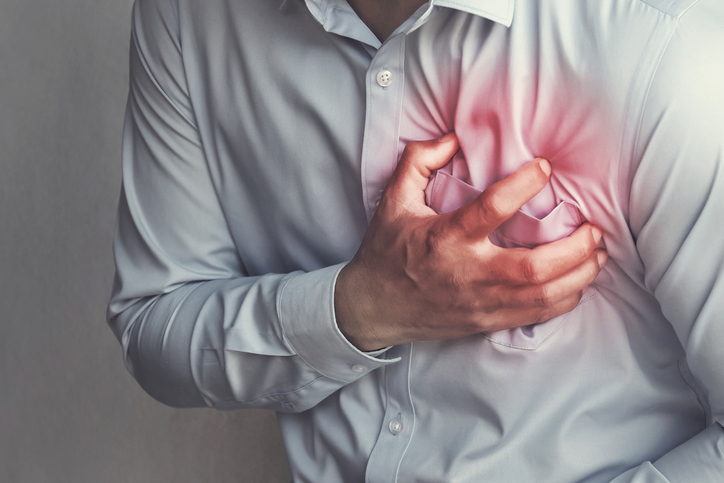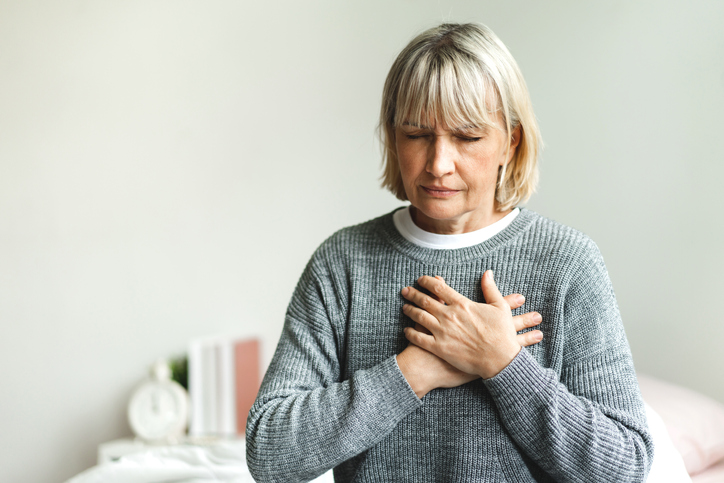Pain
Heart Attacks: Men vs. Women

Heart attacks occur when blood flowing to the heart becomes blocked. Symptoms may appear suddenly or gradually. Although chest pain is the most common symptom of a heart attack, it does not always develop. Heart attack symptoms also vary between men and women.
When a heart attack occurs, immediate medical attention can make the difference between life and death. Both men and women should recognize symptoms of a heart attack and get help at the first signs.
Differences in the heart: men vs. women
While most people assume that women’s and men’s hearts are the same, there are significant differences, which include the following:
- A woman’s heart, including some interior chambers, is smaller than a man’s.
- Heart chamber walls are thinner in women.
- Women’s hearts pump faster than men’s.
- Men pump 10% more blood with each heart beat than women.
- Women’s pulse rate increases and the heart pumps more blood when women become stressed; however, when men become stressed, their arteries become constricted and their blood pressure rises.
Common heart attack symptoms
A large amount of heart damage is caused within the first two hours of a heart attack. Recognizing symptoms is critical. The most common heart attack symptoms, in both men and women, include the following:
- Chest pain, discomfort, tightness or pressure
- Feeling of squeezing, burning, fullness or crushing in the chest
- Shortness of breath
- Pain that radiates to the shoulder, arm(s), neck and/or jaw
- Skin that is cold, clammy, gray or pale
- Sweating or chills
- Dizziness or fainting
- Fatigue
- Nausea or vomiting
- Weak pulse
- “Impending doom” feeling
- Severe anxiety or confusion
Women heart attack symptoms
Women often have different and subtler symptoms of a heart attack than men. Many women do not experience typical chest pain, but may have symptoms that include the following:
- Unusual or sudden and severe fatigue
- Restless sleep
- Lightheadedness, dizziness or fainting
- Shortness of breath
- Cold Sweats
- Indigestion, nausea or vomiting
- Pain in the back, shoulder, jaw, stomach, arm, neck or throat
- Pain or pressure in the center of the chest, which may spread to the arm
- Overall weakness
- Unusually slow or fast heart rate
- Heart palpitations, fluttering or pounding
- Anxiety or fear
Men heart attack symptoms
Men typically have chest pain or discomfort during a heart attack. It usually lasts for several minutes or may go away and return. Men have almost twice as many heart attacks as women. Symptoms of a heart attack in men include the following:
- Chest pain or pressure, oftentimes with a squeezing sensation, pressure, or heaviness
- Upper body pain, such as the arms, left shoulder, back, neck, jaw, or stomach
- Indigestion or stomach discomfort
- Dizziness or feeling faint
- Irregular heartbeat
- Shortness of breath
- Cold sweat
- Nausea or vomiting
Diagnostic challenges
Greater difficulty occurs when diagnosing heart attacks in women. Classic heart attack symptoms are more subtle and tend to be atypical with women. Oftentimes, the obvious chest pain is absent when women have a heart attack. Men also tend to recognize symptoms of heart attacks quicker than women.
During a cardiac catheterization, an angiogram finds narrowing or blockage. Since women may experience blockage in the small arteries, they cannot be identified as clearly or easily.
Common risk factors
Heart attack risks are increased for both men and women with the following:
- High blood pressure
- Diabetes
- High blood sugar
- High cholesterol
- Smoking or tobacco use
- Obesity
- Family history of heart disease
Risk factors for women
Women are at increased risk of a heart attack due to the following:
- Endometriosis
- Polycystic ovary disease
- Stress or depression, which is higher in women
- Menopause
- Pregnancy complications
- Inactivity
- Inflammatory or autoimmune diseases
- Smoking, increased risk in women as opposed to men smoking
- Diabetes or high blood pressure developed during pregnancy
- High testosterone levels before menopause
- High blood pressure during menopause
Other differences
There are other differences of heart attacks between men and women, which include, but are not limited to, the following:
- The average age for a heart attack is 70 in women and 66 in men. This is due to menopause. Estrogen offers protection from heart disease and is no longer produced after menopause.
- Heart attacks in women may not be as noticeable because they often have blockages not only in the main artery, but also in the smaller ones. This is known as vessel heart disease or coronary microvascular disease.
- Women are more likely than men to experience a heart attack without severe artery blockage. Heart attacks in men oftentimes present symptoms when they are active; however, women tend to have more symptoms when resting or sleeping.
- Women regularly require longer hospital stays following a heart attack. They are also more likely to die if they have untreated risk factors. Women experience second heart attacks within 12 months more regularly than men. This could be caused by women having a greater risk of developing blood clots.






